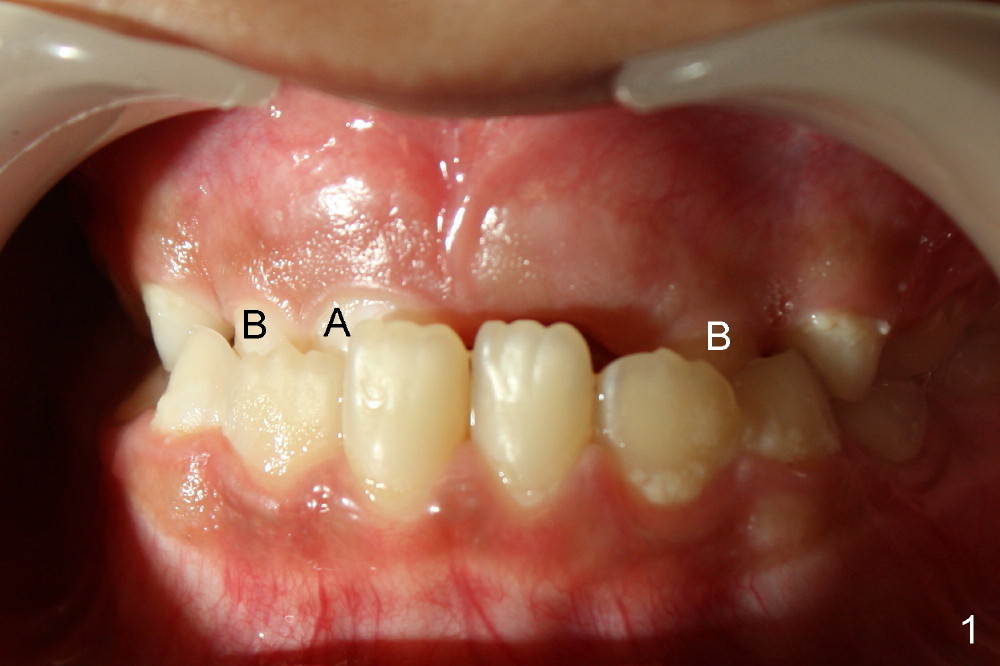
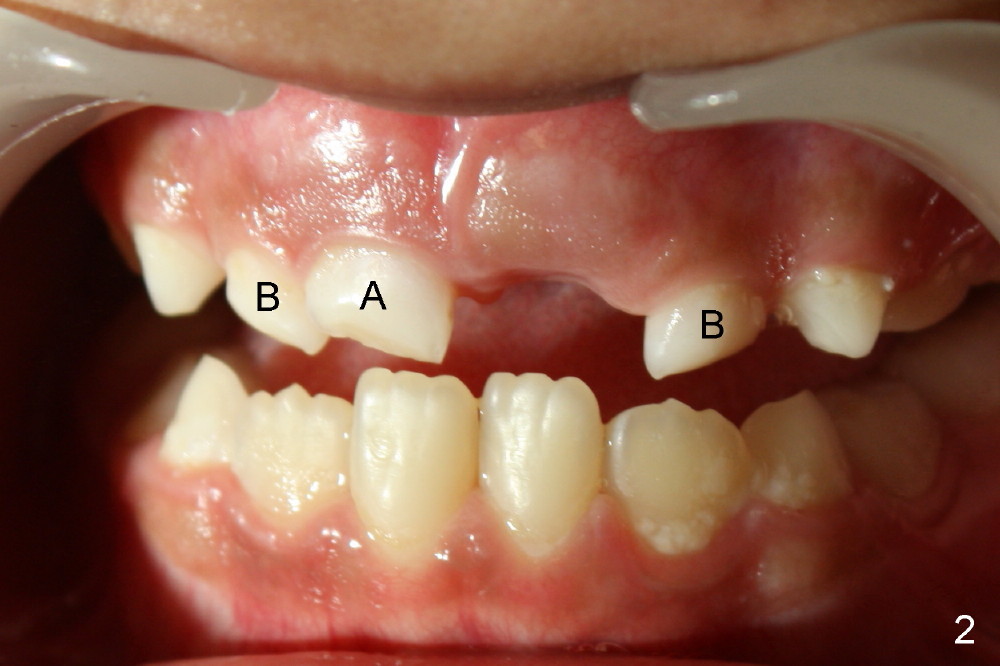
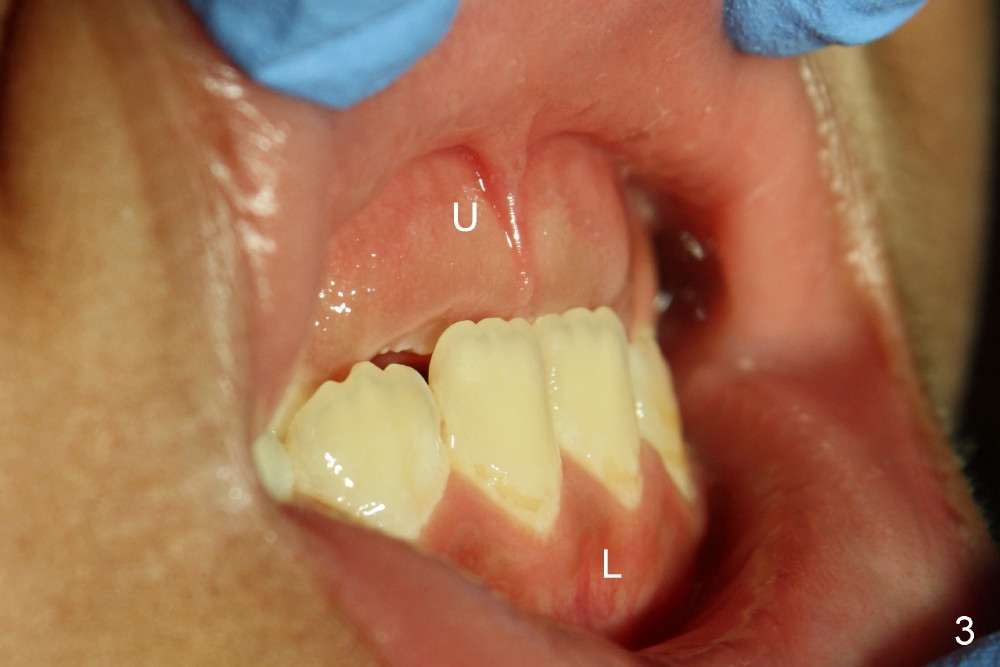
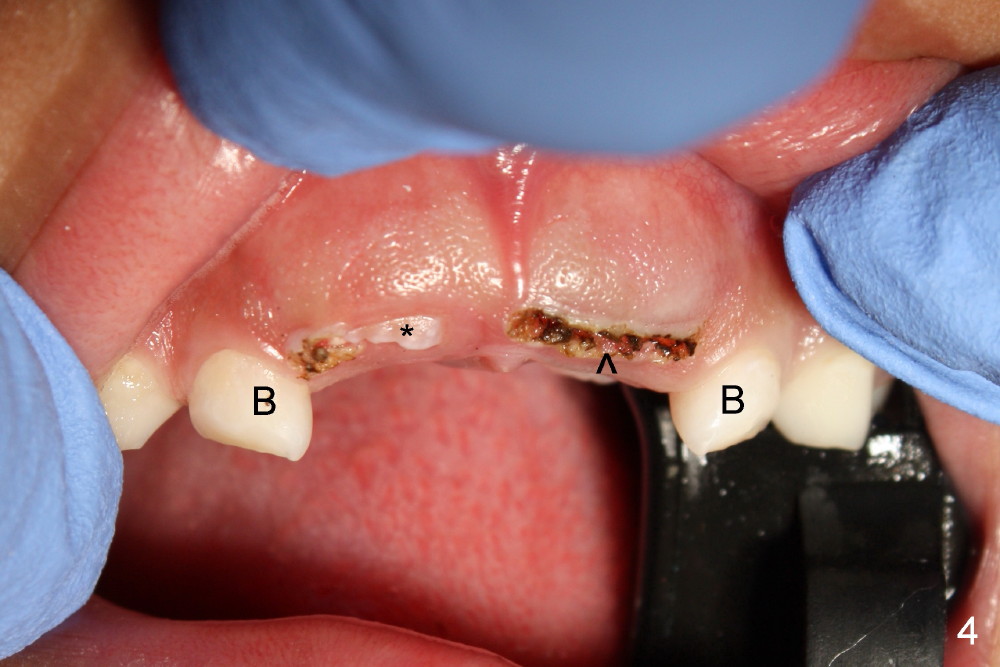
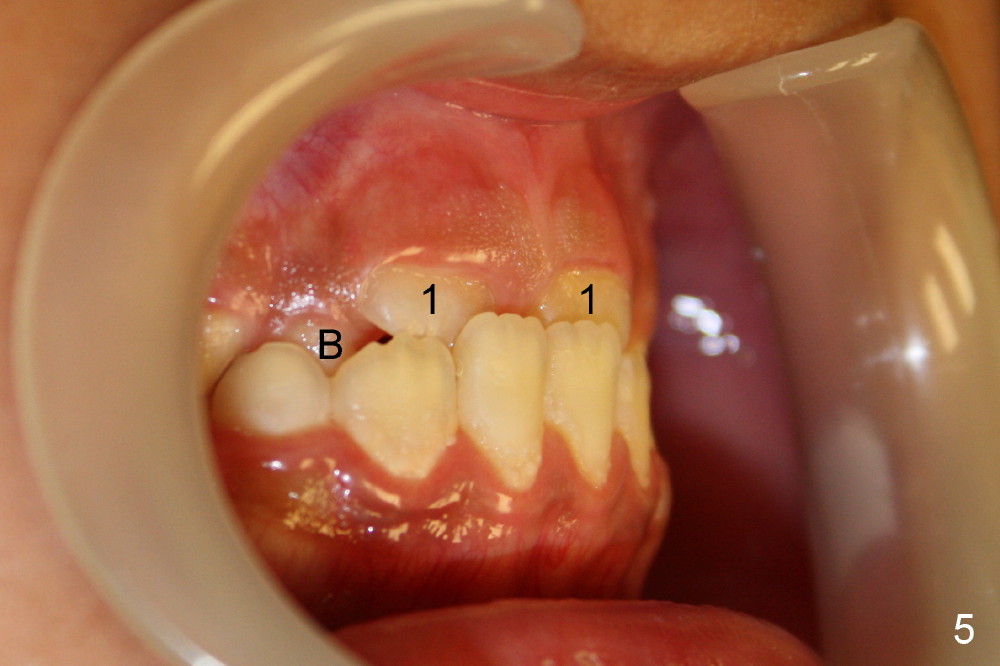
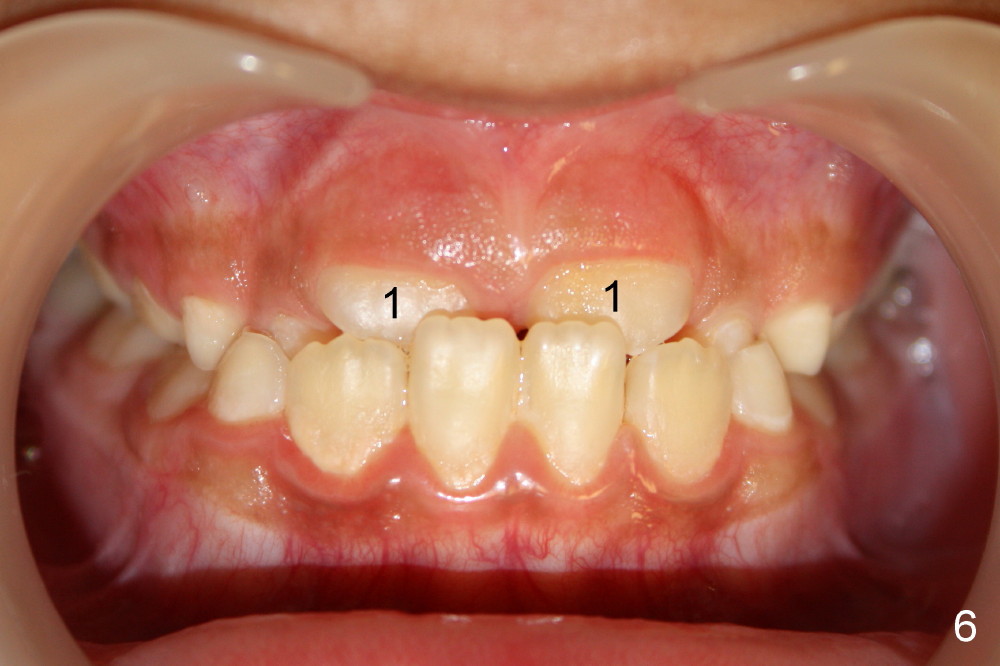
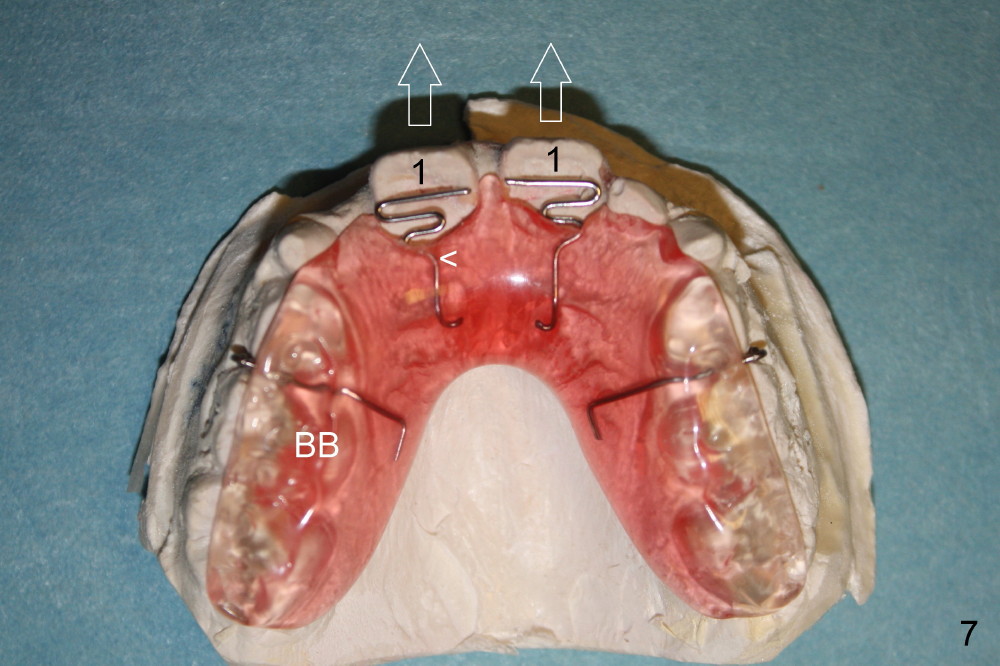
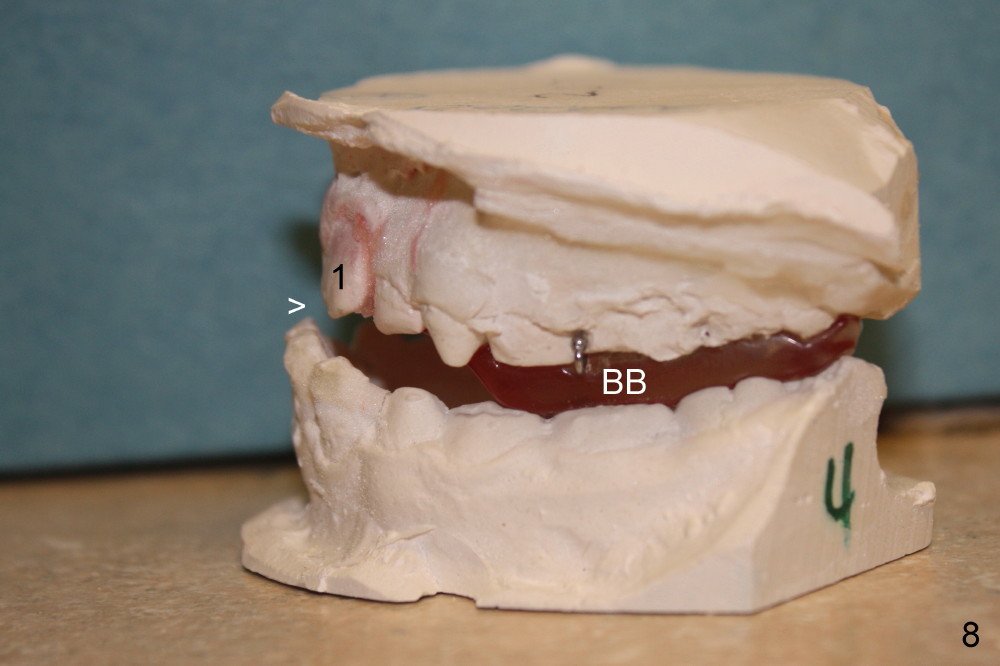
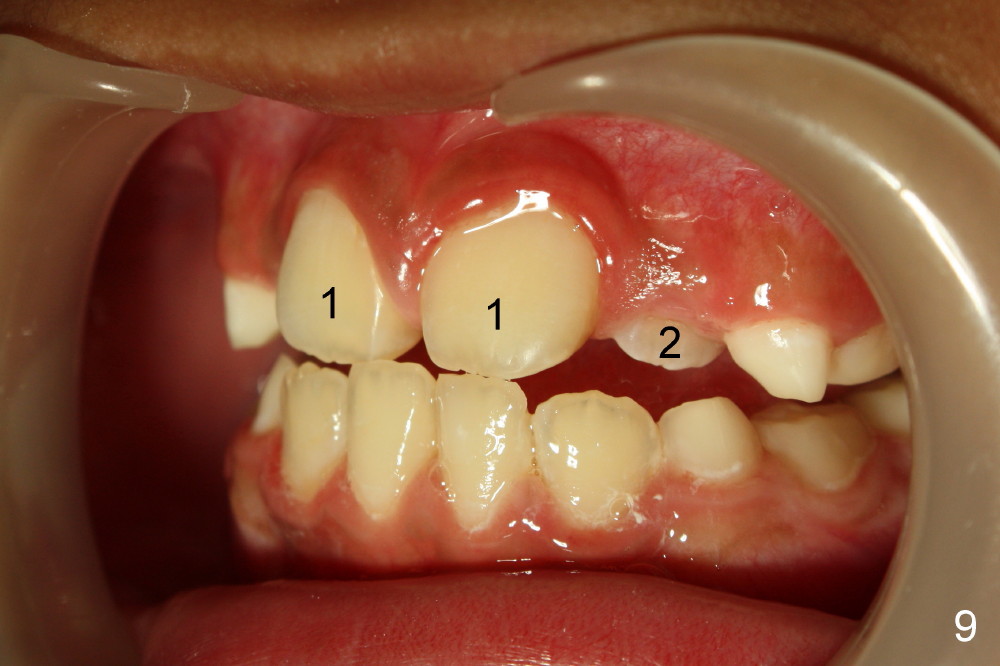
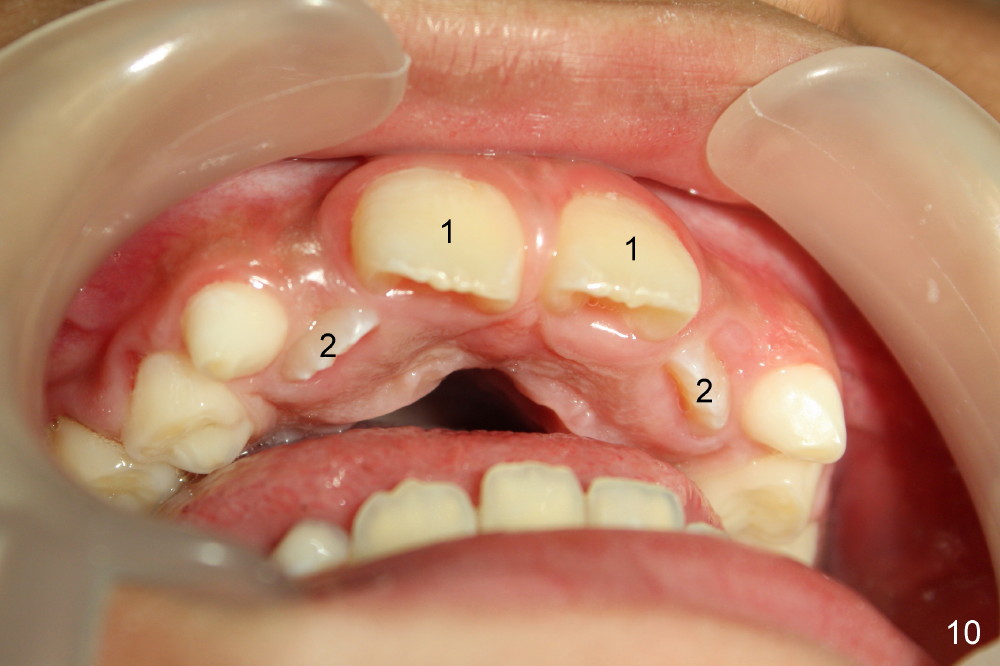
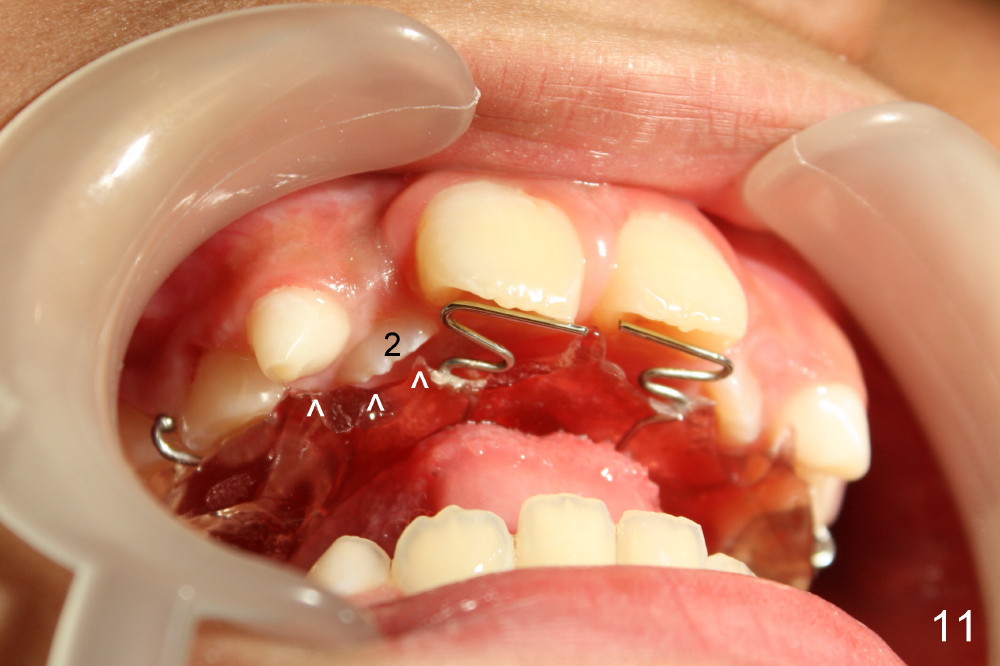
 |
 |
 |
 |
 |
 |
 |
 |
 |
 |
 |
Cross Bite
Edwin has had cross bite since he was little. His top baby teeth (Fig.1,2: A, B) are behind the bottom ones (at the age of 8.5 years). Fig.3 shows the upper jaw (U) behind the lower one (L). Because of the abnormal alignment (cross bite), the top adult front teeth (Fig.4 *, 8 years 9 months) have hard time coming out; laser surgery is done (^) to open the gums to let the teeth go outside. Two months later, they do come out, but also in a wrong position (cross bite), locked inside the bottom teeth (Fig.5,6: #1). Ideally braces have to be placed to fix this complicated condition (as will be shown below), but his family cannot afford it. A less expensive and less reliable method is used; it is called a removable appliance. It has two major parts: the first consisting of two springs (<) to push the top front teeth forward (2 open arrows); the second called bite block (BB, Fig.7,8). The latter unlocks the top front teeth (Fig.8: #1) so that they are free to move forward. In 3 months, the 2 adult front teeth (central incisors (#1 in Fig.9; 9 years 9 months) are indeed repositioned, but the adult lateral incisors (#2 in Fig.9,10, just erupting) are inside the arch (cross bite). The removable appliance needs to be trimmed (Fig.11 ^) to let these 2 lateral incisors (#2) erupt naturally. Since there is not enough space, these 2 teeth may remain in cross bite unless the removable appliance is modified (adding springs behind the lateral incisors).
In brief, when cross bite is severe (starting in baby teeth), orthodontic treatment (braces) should start early with fixed appliance (braces). The latter is more efficient than the removable appliance.
Return to Kids
Xin Wei, DDS, PhD, MS 1st edition 08/09/2014, last revision 08/10/2014